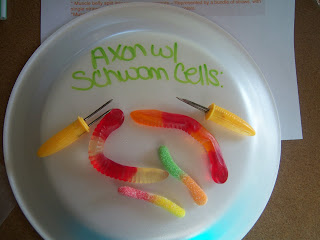CHAPTER 8 REVIEW
8.1) Overview of Digestion
Digestion is the process of metabolism where by a biological entity processes a substance in order to chemically and mechanically convert the substance for the body to use. In mammals, preparation for digestion begins with the cephalic phase in which saliva is produced in the mouth and digestive enzymes are produced in the stomach. Mechanical and chemical digestion begin in the mouth where food is chewed, and mixed with saliva to break down starches. The stomach continues to break food down mechanically and chemically through the churning of the stomach and mixing with enzymes. 8.2) First Part of the Digestive Track
Digestion is the process of turning food into fuel for energy, and for maintenance of the body structure. The digestive tract is a series of hollow organs joined in a long, twisting tube from the mouth to the anus. Inside this tube is a lining called the mucosa. In the mouth, stomach, and small intestine, the mucosa contains tiny glands that produce enzymes to help digest food. There are also two solid digestive organs, the liver and the pancreas, which produce enzymes that reach the intestine through small tubes.
During the digestive process, food passes down the throat, through the esophagus, and into the stomach, where food continues to be broken down. The partially digested food passes into a short tube called the duodenum — the first part of the small intestine. The jejunum and ileum are also part of the small intestine. The liver, the gallbladder, and the pancreas produce enzymes and substances to help with digestion in the small intestine. After the digestive process is complete, the resulting waste travels downstream to the colon. The colon and rectum are parts of the body's digestive system, which removes nutrients from food and stores waste until it passes out of the body. Together, the colon and rectum form a long, muscular tube called the large intestine.
8.3) The Stomach and Small Intestine
The stomach is a large, sack-like organ that churns the food and bathes it in a very strong acid (gastric acid). Food in the stomach that is partly digested and mixed with stomach acids is called chyme.
In the small intestine - After being in the stomach, food enters the duodenum, the first part of the small intestine. It then enters the jejunum and then the ileum (the final part of the small intestine). In the small intestine, bile (produced in the liver and stored in the gall bladder), pancreatic enzymes, and other digestive enzymes produced by the inner wall of the small intestine help in the breakdown of food.
8.4) Three Accessory Oragns & Regulation of Secretions
The three oragns of pancreas, liver, and gallbladder. The pancreas produces pancreatic juice, which contains digestive enzymes for carbohydrates, protein and fat. The liver produces bile, destroyes old blood cells, detoxifies blood, stores iron, makes plasma proetins, stores glucose as glcogen, and helps regualte blood cholestrahl levels. The gallbladder sotres bile, which is produced by the liver.
8.5) The Large Intestine & Defecation
The large intestine is a hollow muscular tube about five feet in length. It is divided into the cecum, colon, and rectum. The cecum comprises the first two or three inches of the large intestine. The colon is subdivided into the ascending, transverse, descending, and sigmoid colon. The sigmoid colon bends toward the left as it joins the rectum which allows gravity to aid the flow of water from the rectum into the sigmoid colon. The last portion of the large intestine is the rectum which extends from the sigmoid colon to the anus (about six inches.) The last inch of the rectum is called the anal canal. It contains the internal and external regulating sphincters which play an important role in regulating defecation. Muscle contractions in the colon push the stool toward the anus. By the time it reaches the rectum, it is solid because most of the water has been absorbed.
8.6) Nutrition and Weight Control
Nutrition is the provision, to cells and organisms, of the materials necessary (in the form of food) to support life. Many common health problems can be prevented or alleviated with good nutrition. Today obesity is on the increase, possibly because people eat to much, food that does not have the proper nutrients. For ex: fast food, and salty foods are not always a good thing to eat every single day. Saturated fatty acids lead to plaque, which occludes blood vessels. itamins and minerals are also required by the body in certain amounts.






































